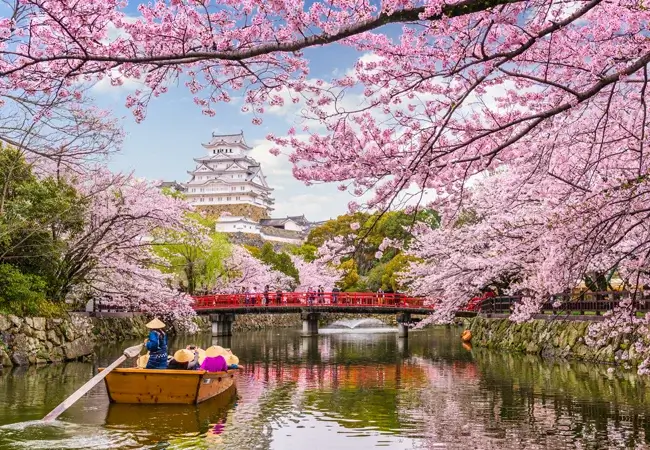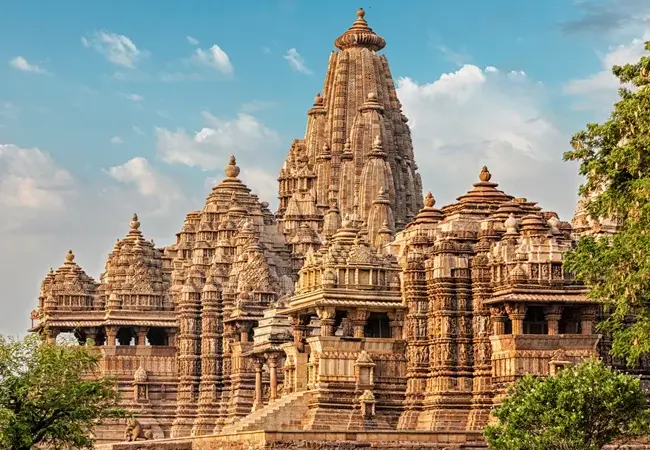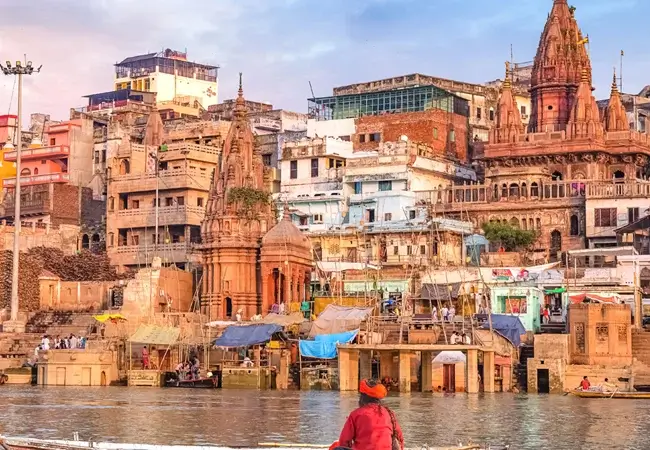Andhra Pradesh is a state occupying the southeastern coastal region of India. It shares its borders with Telangana in the northwest, Chhattisgarh in the north, Odisha in the northeast, Tamil Nadu in the south, Karnataka in the west, and the Bay of Bengal in the east. Once upon a time, this state was the primary Buddhist pilgrimage site in the country as well as a Buddhist learning center which is prevalent in many sites in the state in the form of monastery ruins, chaityas, and stupas. Moreover, people also call it the land of Koh-I-Noor, accompanied by other globally known diamonds from Kollur Mine. Another title it holds is the “Rice bowl of India”. The official language of Andhra Pradesh is Telegu which is considered to be one of the classical languages in the World. And its second official language is Urdu.
Tirupati is a place of religious importance occupying the heart of the state of Andhra Pradesh. This place houses the important shrine of Tirumala Venkateswara Temple and other historic temples of India. Hence, it is also referred to as the “Spiritual Capital of Andhra Pradesh” and is located at a distance of approximately 150 km from Chennai. It also holds the record of being one of the eight Swayam vyaktha kshetras (Self-manifested Temples) dedicated to Lord Vishnu.

Sri Venkateswara Swamy Vaari Temple is a temple dedicated to Venkateswara, a form of Lord Vishnu, and is situated in the hill town of Tirumala at Tirupati in the Tirupati district of Andhra Pradesh. The locals also call the Lord here Kaliyuga Prathyaksha Daivam. The other names of this temple are Tirumala Temple, Tirupati Temple, and Tirupati Balaji Temple. Managed by Tirumala Tirupati Devasthanams (TTD), this temple remains under the direct control of the Andhra Pradesh Government. The revenue generated from this shrine is utilized by the Government of Andhra Pradesh.
Tirumala Hills are part of Seshachalam Hills range which is 853 meters in height above sea level and comprises seven peaks that are known to represent the seven heads of Adisesha. The temple is occupying the seventh peak namely Venkatadri, on the southern banks of Sri Swami Pushkarini, a holy water tank. Thus, this temple is also famous by the name ‘Temple of Seven Hills”.

It is another significant and ancient temple located at the heart of the temple city- Tirupati. Sri Vaishnavite Saint Ramanujacharya is known to be credited with the consecration of this temple in 1130 A.D. Before Lord Shri Govindaraja Swamy, Sri Parthasarathi Swamy was the presiding deity of this temple. The daily rituals of this temple are performed according to “Vaikhanasa Agama”.
When South India was invaded by Mughal rulers, the presiding deity of Chidambaram, Sri Govindaraja Swamy was brought and kept safely in Tirupati. After the situation at Chidambaram returned to normalcy, the vigraham of Lord Sri Govindaraja Swamy was taken back to its original location. According to mythology, Sri Govindaraja Swamy is the elder brother of Sri Venkateswara Swamy, who accomplished the ever-magnificent marriage between Sri Venkateswara Swamy and Padmavathi Ammavaru. Sri Govindaraja Swamy was the caretaker of massive wealth being obtained from King Kubera for conducting the wedding. He efficiently utilized this wealth to conduct one of the most glorious weddings in history.
This temple is considered to be one of the ancient as well as historical temples in India. Vayu is incarnated as Lord Shiva and worshipped as Kalahastheeswara. Here, Goddess Parvathi Devi is worshipped as Gnanaprasunambika. This temple is known to be situated at the heart of the Chittoor district of Andhra Pradesh and on the banks of the river Swarnamukhi. At some points, the hill serves as the wall of the temple and protects it. The northernmost part of the temple is covered by Durgambika hill and the southern part is surrounded by Kannappar hill.
Rahu-Ketu worship is quite famous in this temple and is performed during Rahu kalam timing. Thus, Srikalahasti Temple is always crowded with devotees coming from different parts of the country to take part in the Rahu-Ketu pooja. According to ancient Tamil sources, this temple is known to be the “Kailas of the South” for slightly more than two thousand years, and the small river on whose banks it sits, the “Ganges of the South”.

Sri Padmavathi Ammavari Temple is situated at a distance of 5 km from Tiruchanur village in Chittoor district near Tirupati in Andhra Pradesh. This temple is dedicated to Goddess Lakshmi and is also known by the name of Alamelmangapuram. According to popular beliefs, visiting Sri Padmavathi Ammavari Temple fulfills all the wishes of a person. It is also believed that the wishes of those who visit the temple of Tirupati Balaji are only fulfilled when the devotees visit Sri Padmavathi Ammavari Temple along with Balaji and take blessings. The sub-temples of Lord Shri Krishna, Balram, Sundarraj Swami, and Suryanarayan Swami on the premises of this temple are also present.
ISKCON (International Society for Krishna Consciousness) temples are located all over the world. The ISKCON Temple in Tirupati is especially popular due to its amazing architecture and location which tends to increase its charm further. His holy Srila Prabhupada visited Tirumala- Tirupati in the year 1974-1975 and decided to construct this temple here. He believed that Tirupati could be an ideal place to promote the teachings of the Bhagwat-Gita and Lord Krishna while in turn creating an environment of amity throughout the world. At the foot of Tirumala Hills, in 1984, a small temple was inaugurated with the installation of the idols of Lord Krishna and Goddess Radha. However, in the year 2005, this temple became accessible to everyone. The ISKCON Tirupati is also one of the largest ISKCON temples in the world.

Known to be the only Shiva temple in the vicinity of Tirupati, the Kapila Theertham Temple is situated at a distance of 25 km from Tirumala Balaji Temple. There is a famous waterfall situated inside this temple where the water of mountain streams drops from a height of over 100 feet into a large pond in the temple premises. It also holds the record of being one of the most visited tourist places in Tirupati and a primary pilgrimage site in the city.
According to legends, Saint Kapila Maharishi was said to have lived here, worshipped, and meditated in the cave in front of the idol of Lord Shiva. As a result, this place is named after the saint Kapila Theertham. It is also believed that Lord Shiva blessed Saint Kapila with a vision of himself and his consort. The temple received support from the Kings of Vijayanagara between the 13th and 16th centuries, especially from Krishna Devaraya.
The Srivari Padala Mandapam Temple is located at Alipiri which is considered to be the Gateway to Tirumala temple and is under the administrative control of Sri Govindaraja Swamy Temple. This temple has a unique feature. The devotees who trek from the Alipiri footpath route tend to offer their prayers first in this ancient temple. Pilgrims tend to carry the holy “Padukalu (Footwear), which the Lord himself uses. According to the temple legend, Sri Venkateswara Swamy, every day after Ekanta Seva in Tirumala, meets his beloved wife Padmavathi Devi in Tiruchanoor, walks along the Alipiri footpath route, and then leaves his footwear in Alipiri Padalu, hence the name Alipiri Padala Mandapam.
Full of tradition and culture, the cuisine of Tirupati is a perfect blend of Tamil and Telegu cuisine. It is so because Tirupati used to be a part of Tamil Nadu before 1953 and later on became a part of Andhra Pradesh. However, Tirupati is a religiously significant city, and most of the dishes available here are vegetarian. One of the most common foods that devotees can try while in Tirupati is Pulihora which is also known as tamarind rice in many parts of India. Cooked rice is seasoned with tamarind paste, which gives it a tangy taste. Payasam is another classic traditional dessert made using milk, sugar, and rice. Other significant dishes of Tirupati are Pongal and Bisibelebhath.

The best time to visit Tirupati is from November to February because the weather remains pleasant and ideal for temple tours during this period.














